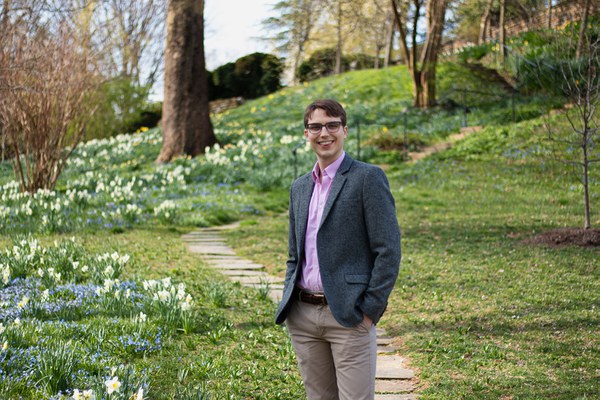John Mulhall, a PhD candidate in history at Harvard University, is a William R. Tyler fellow in Byzantine Studies. His recent research report, “Eastern Knowledge, Latin Letters: A Cultural History of the Medieval Translation Movement, ca. 1050–1350,” teased out the attitudes, motivations, and origins behind medieval translations of Greek and Arabic texts on subjects including medicine, philosophy, mathematics, and theology.
Q&A with John Mulhall
What does Christopher Columbus reveal about the medieval translation movement?
People thought it was impossible to sail west from Europe to Asia: there was too much ocean. You’d die of starvation and thirst. We know from Christopher Columbus’s son and biographer that there was one source above all that convinced Columbus the journey was possible, a text by ninth-century Arab Muslim Al-Farghani.
Columbus actually misinterpreted Al-Farghani’s calculations, which some scholars think are off by less than 1% in estimating the actual size of the world. But it is striking to me that it was commonplace for someone like Columbus to take on authority this ninth-century Arab Muslim from Baghdad—a source that might seem odd to us, given the text was half a millennium old and written in another language. How did he even access this source at all?
The story of Columbus shows that the translation movement of Greek and Arabic texts in the twelfth and thirteenth centuries was still affecting science, exploration, and world-changing events like Columbus’s voyage centuries later. The medieval translation movement was the first large-scale effort to recover the science of antiquity. After the fall of the Roman empire, Latin became the sole language of education, so from the start of the seventh century through the late eleventh and early twelfth centuries, Western elites only had access to what was available in Latin. The translation movement introduced additions and, you could say, advancements not only from the Greek tradition but especially from the Arabic tradition. Many epoch-changing moments like Copernicus’s heliocentric revolution had Arabic science behind them.
What have you focused on while at Dumbarton Oaks?
The first chapter of my dissertation looks at the origins of common attitudes in the medieval translation movement that people in the West had toward Greeks and Arabs. For example, many translators’ prefaces emphasize Latin intellectual deficiency and Greek and Arab intellectual superiority. These are Latins critiquing their own tradition. How can we make sense of these statements in the period of the Crusades? Where do these attitudes start?
If the twelfth century was a translation explosion all over the Mediterranean, then the late eleventh century was the spark. Translation activity was mostly circumscribed to southern Italy, and I focus on the two most prominent translators, Constantinus Africanus and Alfanus of Salerno. In their prefaces, is the Greek and Arabic tradition favorably contrasted to the Latin tradition?
My argument is that while we do see the idea that the Latin tradition is deficient compared to the Greek, in the eleventh century that idea has not been extended to Arabic. I argue that Latins in the eleventh century have no space yet to articulate or even stereotype Arabic intellectual achievement—you see just the very earliest hints that there is all this knowledge written in Arabic.
I have also benefited from the scholarly community here; you can come out of every lunchtime discussion with a new perspective on your own research. Last semester, I joined a Byzantine astronomy reading group with fellow Alberto Bardi, who taught us how to use the astronomical reading tables I encounter frequently in manuscripts compiling Latin translations of scientific texts. The tables are like paper-and-pencil calculators, embedded with complex mathematics that allow you to make easy calculations about where the sun or moon or any moving celestial object is going to be.
What is an example of one of these translated texts? How did translations spread?
One example is a medical collection called the Articella, which became the canon of introductory texts for all good, learned physicians. The texts include the Isagoge (“introduction” in Greek) by an Arab Christian named Hunayn ibn Ishaq, two works of Hippocrates, a work on pulses by Philaretus, and Theophilus writing on urine.
Although we are largely in the dark about how translated texts traveled, we have some hints. When people visited a monastery, they copied texts. Or people made requests and called in favors. For example, the famous theologian Anselm of Canterbury—considered one of the eleventh-century protoscholastics—wrote a letter to a fellow monk asking him to copy out one of the Articella texts. But, he wrote, if you don’t have time to copy everything, make sure you copy out any Greek glosses. So what he really wanted was this new Greek knowledge.
Julia Ostmann is postgraduate writing and reporting fellow at Dumbarton Oaks. Photo by Elizabeth Muñoz Huber, postgraduate digital media fellow.

